Exploring the Pros and Cons of Generative AI in Design
The integration of AI tools into design workflows – particularly within design environments such as Photoshop, Illustrator, and Firefly opens up exciting possibilities for enhancing the creative process while improving efficiency. These tools undeniably offer convenience and improved speed, but their effectiveness varies across a range of tasks, and this raises questions about their true value in enhancing design projects.
Let’s delve into the nuances of AI-generated imagery and its impact on the creative process. We will look at where the current AI tools show limitations; how AI generated images can be improved through effective prompting; how to recognize AI images; the impact of AI on brand identity; and the future prospects for the technologies.
Faster, but Not Always Perfect
AI tools in Photoshop streamline repetitive tasks like image retouching and object removal which boosts productivity. However, these tools don’t always deliver flawless results, often requiring manual adjustments to achieve the desired outcome.
Example of Adobe Photoshop Generative Expand tool:
Step 1: Expand the image with the crop tool and ask the AI tool to generate the rest of the image.
Step 2: Wait for the image to be generated.
Step 3: Choose between the 3 image variations.



When the images are carefully inspected there will almost always be some strange glitches or artefacts which need to be polished by hand. For simple images which will not get close attention this approach gives good results and saves some time during production.
Example of Adobe Photoshop Generative Fill tool:
Step 1 : Select the area of the image you want to change and write the prompt. In this case ‘’replace object with a pen cup’’
Step 2 : Wait for the image to be generated.
Step 3 : Choose between the 3 images variation.




In this case the perspective of the newly generated object is completely wrong and so the AI tool cannot be used to complete the image editing. This demonstrates the examples of situations where the AI tool capabilities are not adequate.
Find out how AGCS can bring your creative ideas to life.
Image Generation – Striking a Balance
Platforms like Firefly promise effortless creation of images from scratch – based on user text inputs or prompts – thus eliminating the need for extensive design skills. However, the results are hit-or-miss, with only a few meeting professional standards. The challenge for users is to find a balance between leveraging AI for quick prototypes or abstract visuals and preserving the integrity and quality of human creativity in design.
Below are some simplified examples of prompts for creating images using AI:
“Generate a landscape with a mountain, trees, and a lake.”
“Make an abstract pattern with vibrant colours and geometric shapes.”
“Make a minimalist illustration of a beach scene with palm trees and a sunset.”
Testing:
‘’’Generate an image of a 40 years old woman engaged in the creative process, designing on an iPad, inside her modern house.’’


Result:
The image contains many glitches and artefacts, especially in the background or the scene.
Testing:
The following is a second example of AI generated images using a different style for comparison:
‘’Create a cartoon-style character of a friendly robot.’’
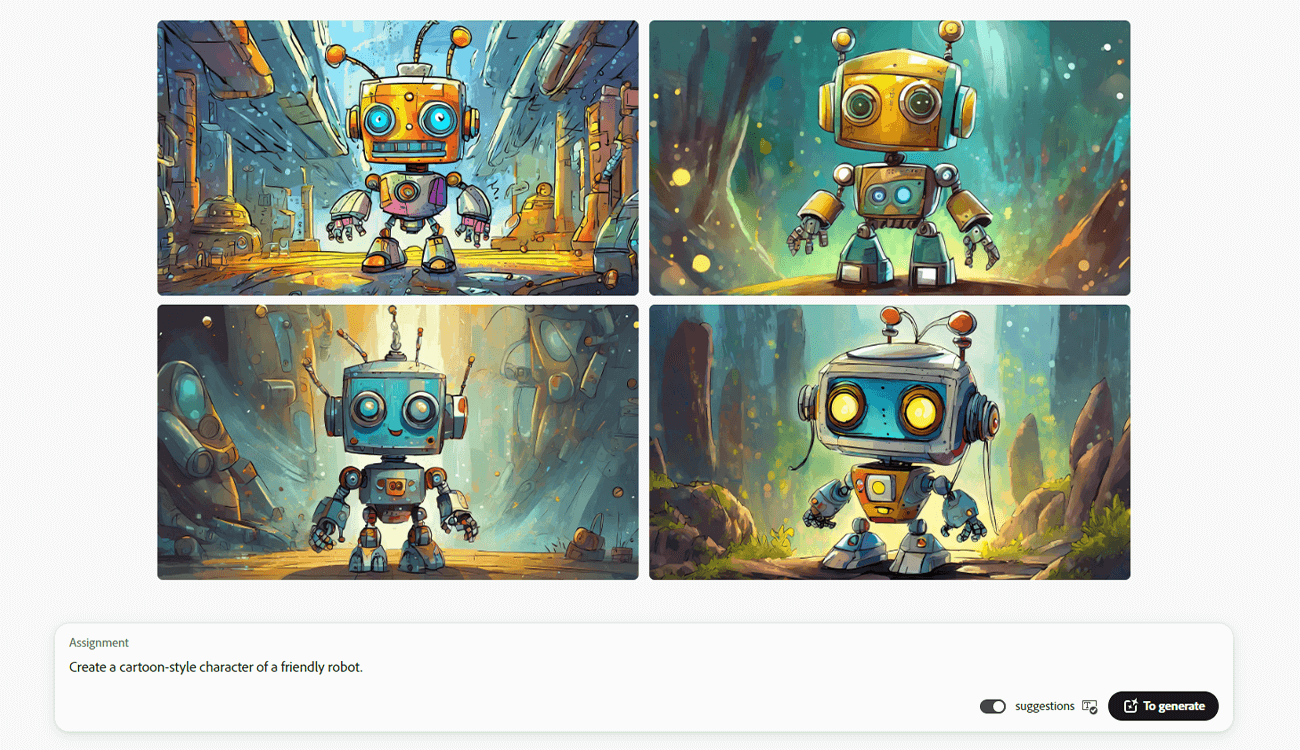
Result:
The images are good, yet some parts of the illustration could be improved with proper design. In general the AI tool gives a nice result in this circumstance.
The prompts provide a basic idea or concept for the AI tool to work with when generating images. Depending on the sophistication of the AI model, and the specificity of the prompt, the resulting images can vary widely in style, detail, and quality.
Firefly provides different styles and effects to choose from, as can be seen in the following example.
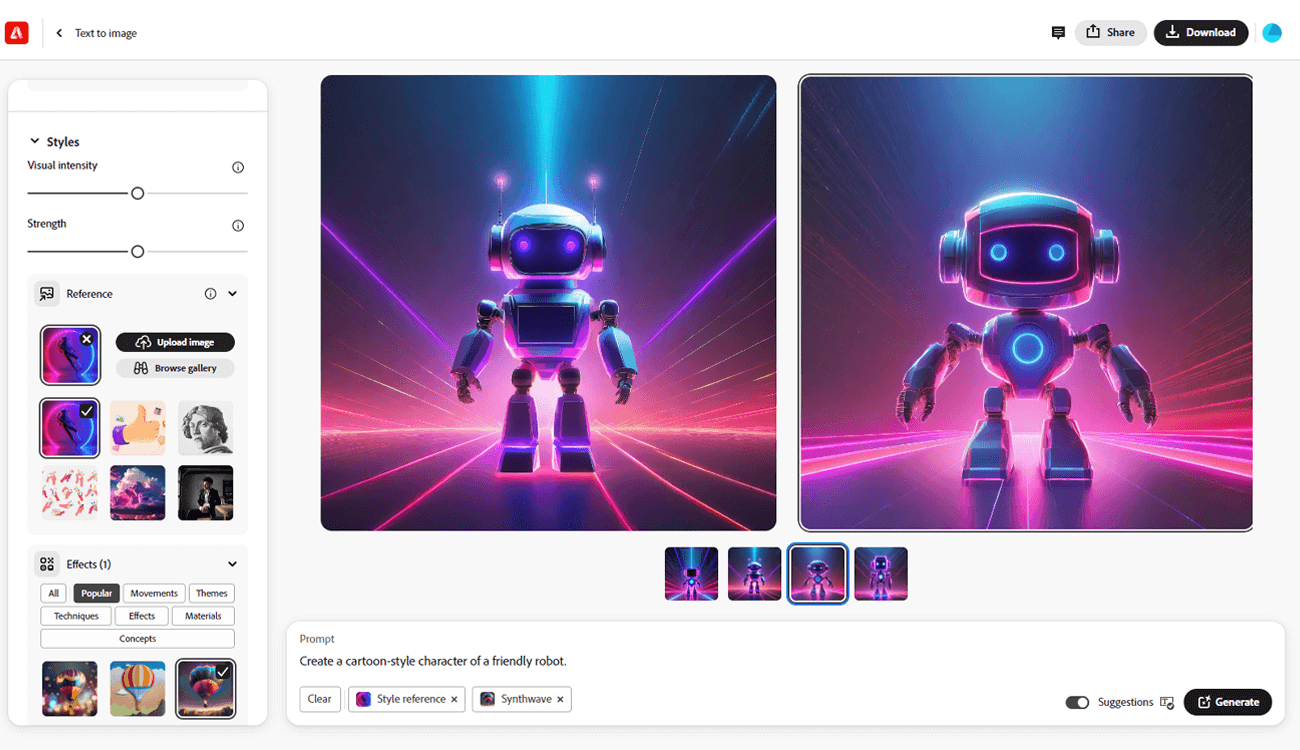
One could also employ a more complex prompt:
“Generate a high-resolution image of a bustling city street at dusk. The scene should be bathed in warm, golden light with soft shadows cast by the setting sun. Incorporate a variety of urban elements such as tall buildings, traffic lights, parked cars, and pedestrians. Use a predominantly blue and orange colour palette to evoke a sense of tranquillity and vibrancy. The camera should be positioned at eye level, slightly tilted upwards, with a wide-angle lens (such as 24mm) to capture the expansive cityscape and emphasise the depth of the scene. Ensure that the composition feels dynamic and inviting, drawing the viewer into the lively atmosphere of the urban environment.”
This prompt provides detailed instructions for the AI to follow when generating the image, including specific visual elements, colour preferences, and camera settings. By including such detailed information, the AI can produce images that align more closely with the desired aesthetic and mood, resulting in more realistic and visually appealing outcomes.
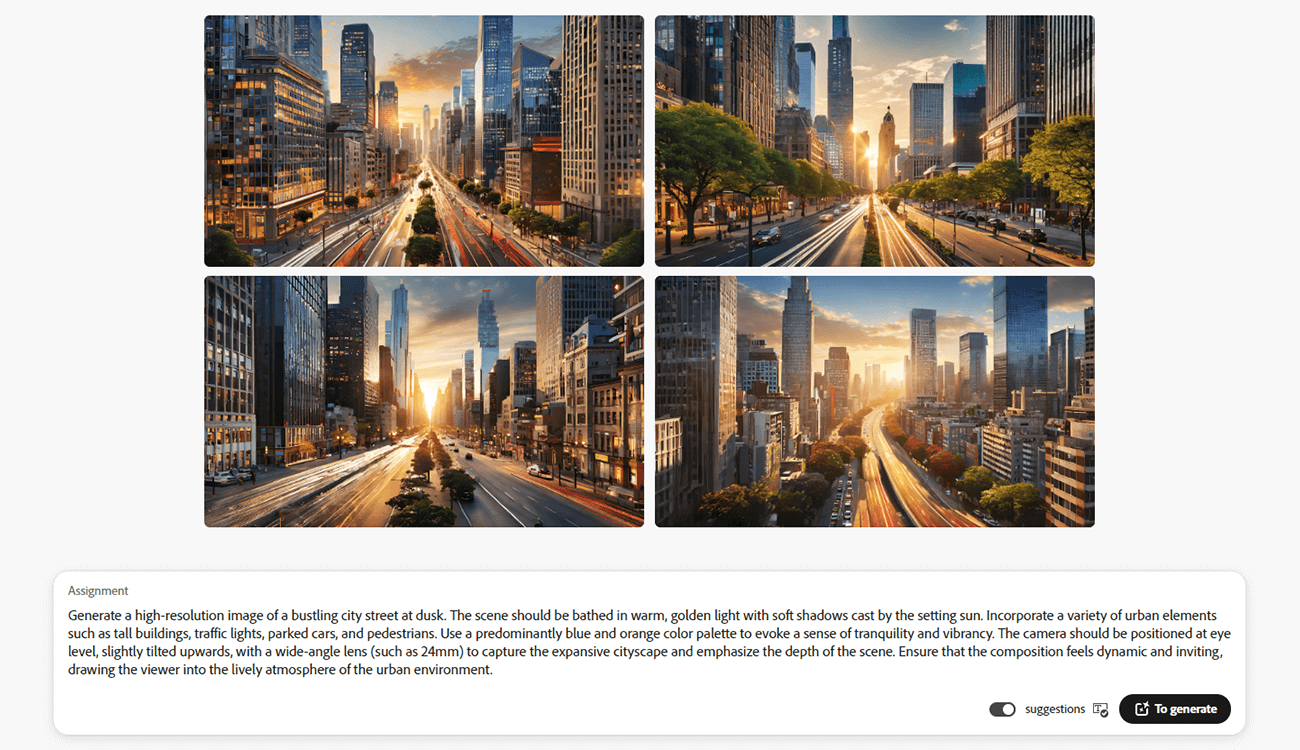
Recognizing AI-Generated Artifacts
As designers, we possess a discerning eye for quality and authenticity. AI-generated images often exhibit telltale signs such as low resolution, unnatural textures, or subtle glitches. These artefacts detract from the visual coherence and can compromise the credibility of the final product. The recent backlash against Wacom’s AI campaign underscores the importance of maintaining artistic integrity amid technological advancements.
At first glance the image appears cohesive, but closer inspection reveals several inconsistencies. These artefacts are highlighted with red circles in the image below:
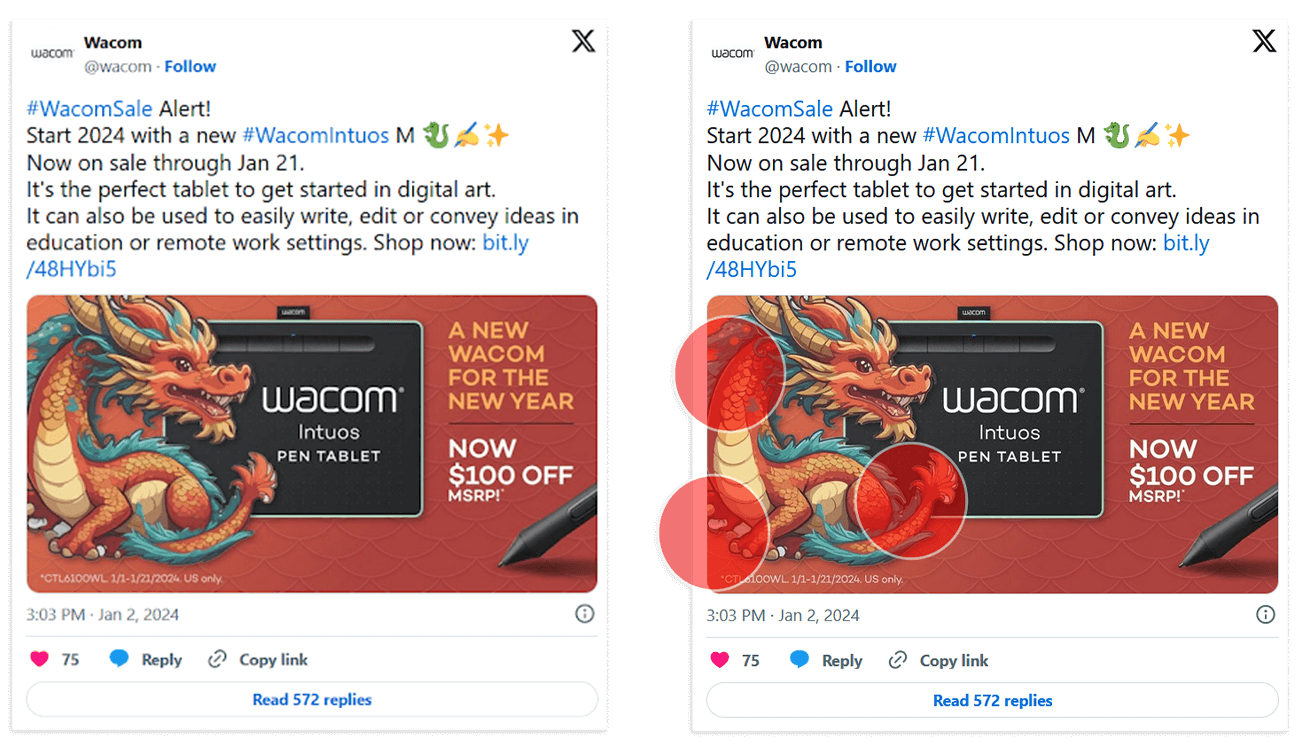
Impact on Brand and Advertising
Employing AI-generated imagery introduces the risk of diluting a brand’s unique identity and visual language. While AI-generated content can be useful for generating a large volume of visuals quickly and cost-effectively, it often lacks the human touch and emotional resonance that define authentic brand communication. Designers must tread carefully to ensure that AI supplements rather than supplants the creative vision and brand ethos.
Using AI to generate images for brands and advertisements comes with several concerns that need to be addressed thoughtfully:
- Quality and Authenticity: AI tools can generate images efficiently, but it is crucial to ensure the quality and authenticity of these images. There may be instances where AI-generated images lack the human touch or appear artificial, which can easily hurt the brand perception.
- Ethical Implications: AI-generated images may raise ethical concerns, especially if they are used to depict unrealistic beauty standards, promote stereotypes, or manipulate perceptions. Brands need to be mindful of the ethical implications of the images they use in their advertising campaigns.
- Copyright and Ownership: There may be legal complexities regarding the ownership and copyright of AI-generated images. Brands need to ensure that they have the necessary rights to use these images in their advertisements without infringing on any copyrights or intellectual property rights.
- Brand Consistency: Maintaining consistency is essential for building brand identity and recognition. AI-generated images should align with the brand’s aesthetic and messaging to ensure consistency across all marketing channels.
- Consumer Trust: Consumers may be sceptical about AI-generated images, especially if they perceive them as deceptive or manipulative. Building and maintaining trust with consumers should be a priority, and brands need to be transparent about the use of AI in generating images for their advertisements.
- Unintended Biases: AI algorithms are trained on large datasets, which may contain biases. These biases can inadvertently influence the images generated by AI, leading to unintended consequences in advertising, such as reinforcing stereotypes or marginalising certain groups of people.
- Creative Limitations: While AI can generate images based on input data, it may be found to fall short in simulating the creativity and innovation that human artists bring to the table. Brands should carefully assess whether AI-generated images meet their creative standards and objectives.
Brands should prioritise transparency, quality, and ethical considerations to ensure that AI-generated images enhance rather than detract from their marketing efforts. Additionally, staying informed about the latest developments in AI technology and regulations can help brands navigate the evolving landscape of AI in advertising responsibly.
Future Prospects and Adaptation
Despite the current limitations, the tools and technologies are evolving rapidly and the expansion of AI in graphic design is inevitable. Future iterations may address existing shortcomings, offering more refined tools that seamlessly integrate with the designer’s creative process. As professionals, our willingness to adapt and embrace emerging technologies will certainly determine our relevance in an increasingly AI-driven landscape.
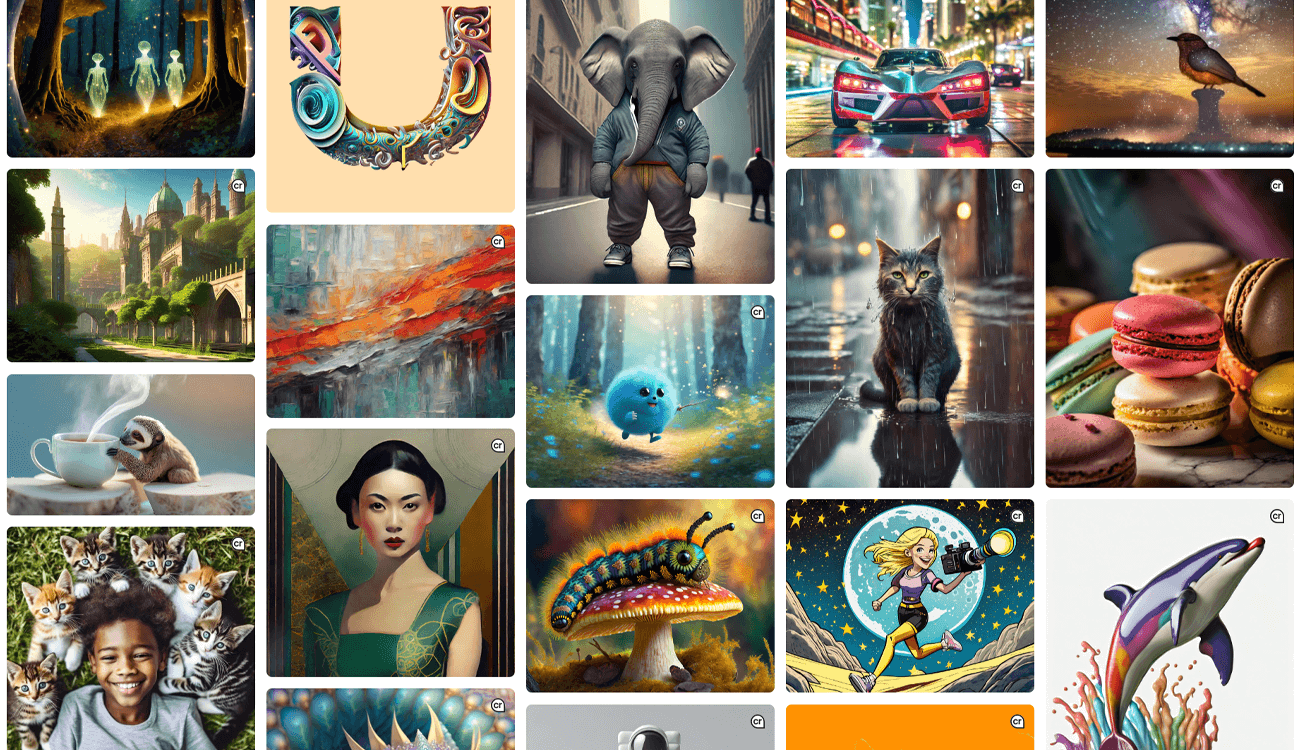
News!
Adobe has unveiled Firefly Services and Custom Models, presenting a glimpse into the future of content creation, which will assist businesses to create content faster and ensure it is in line with their brand. Firefly Services offer tools to make content creation easier, while Custom Models allow companies to train AI models to make content that matches their brand style. These new tools make it simpler for businesses to personalise content and incorporate the tools into the creative process.
Adobe statement:’’ Adobe is committed to developing generative AI in a responsible manner. We focus on the makers. Our mission is to allow makers to take full advantage of all the benefits – not only in the creative field, but also in a practical sense. Firefly continues to evolve and we continue to work closely with the creative community to build technology that supports and enhances the creative process.’’
Watch the video here.
Conclusion
The integration of AI in graphic design presents both opportunities and challenges. While AI tools enhance efficiency and offer novel possibilities, they also pose risks to artistic integrity and brand authenticity. As designers, it’s imperative for us to critically evaluate the role of AI in our workflow, leveraging its strengths while safeguarding the essence of human creativity and expression. Only by striking a delicate balance can we harness the full potential of AI as a complement to our craft, rather than a replacement for it.


